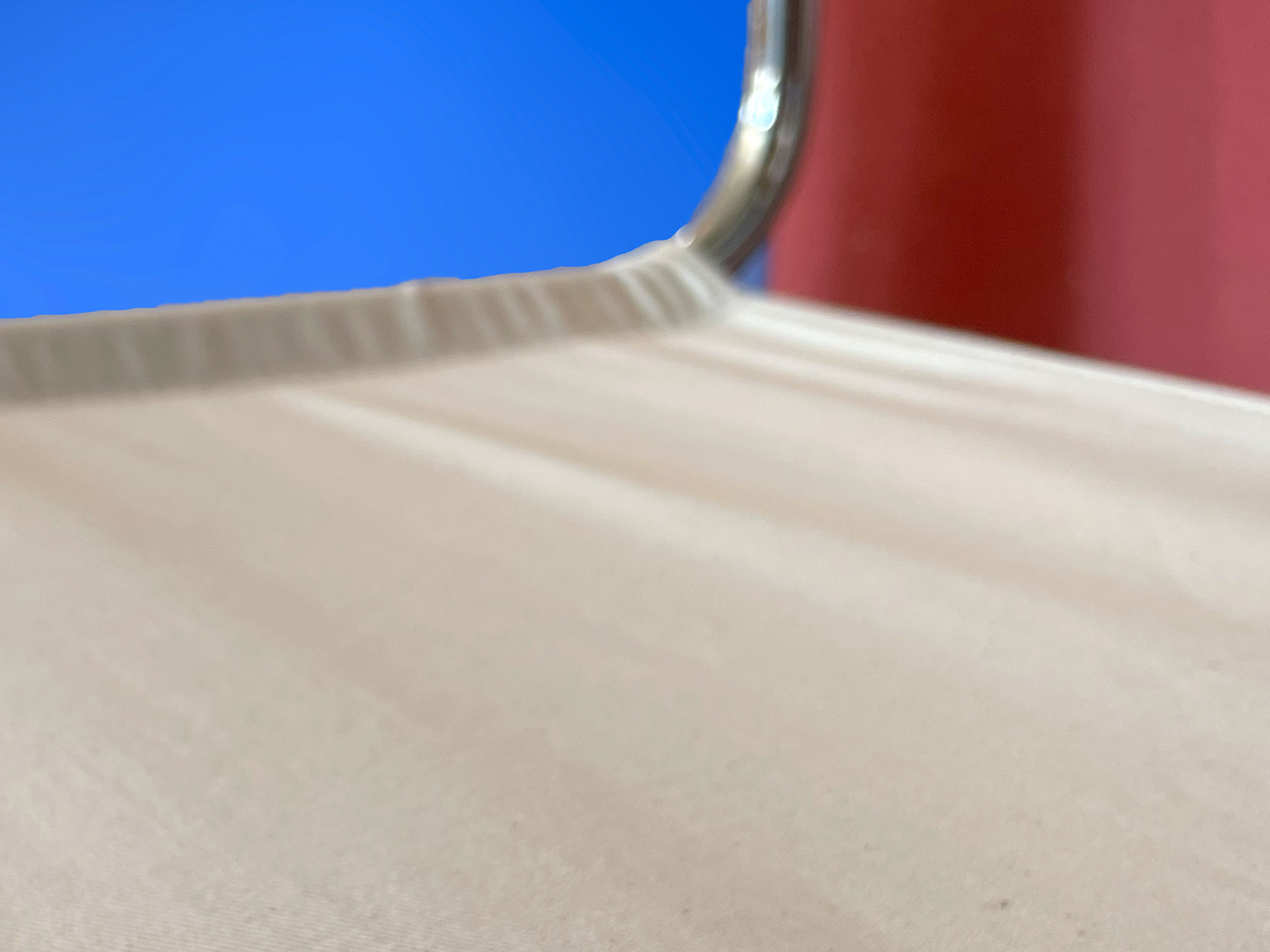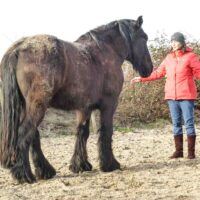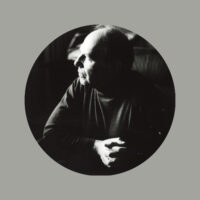A chair from and for the Goetheanum, in which European tradition, the departure into modernity, and new community are reflected.
At 360 cm x 790 cm, the tapestry Guernica de la Ecología by Claudy Jongstra has the same dimensions as its artistic and historical model, Guernica, painted by Pablo Picasso in 1937 as an indictment of the violence during the Spanish Civil War. Guernica de la Ecología denounces the treatment of nature and calls for biodiversity, the dignity of craftsmanship, and the restoration of healthy agriculture in an inclusive working environment.
The raw material for Jongstra’s work is wool from Dutch moorland sheep. The colours are distilled from natural dye plants grown on her biodynamic farm. Ecology is a global cause, so her tapestry is going around the world: in 2022, it was at the international EVPA Impact Conference in Brussels and at the Biodiversity Summit in Montreal. This year, Guernica de la Ecología is part of the exhibition on the relationship between human beings and nature in Bergen/Norway and will soon be in The Hague for the Spanish Presidency of the EU, as well as at the Goetheanum World Conference at the Goetheanum.
Now, Claudy Jongstra has turned her attention to the iconic Thonet S33 cantilever chair by Mart Stam. Surprisingly, in 1986, Stam transferred the patent rights to the Goetheanum and that piece of paper has now become a chair of its own. Here is Wolfgang Held’s interview with Claudy Jongstra.
What is your objective with the chair?
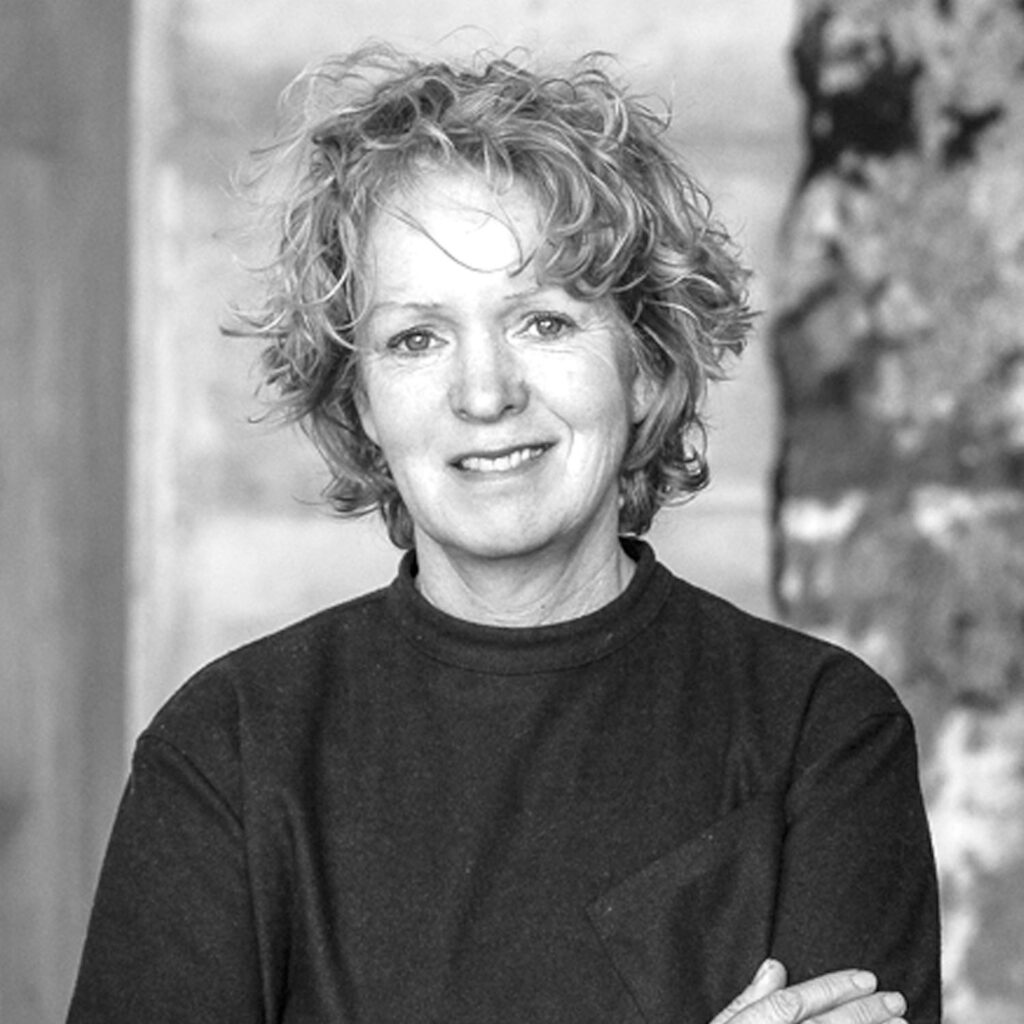
Claudy Jongstra The petrochemical dyes usually used in interior design today have an enormous environmental impact. Twenty percent of river and lake pollution comes from the textile industry. That is why ecological dyeing is so important to me. At the same time, the “Thonet S33” cantilever chair is a narrative for me, an object that invites conversation because it has this ecological history of development and will, therefore, also become something like a collector’s item—I am convinced of that.
What meaning does a chair have for you in general?
It should be comfortable and beautiful. We like to sit in community, and the chair we have developed works well in such a setting. I am, of course, delighted that it will be on stage during the conference—it is, indeed, part of the Goetheanum World Conference. That’s fitting because it’s a piece that speaks, literally: its ecological and social aspects matter more than its extraordinary aesthetics.
You are using wool again, as you did for the large tapestry. What is your connection with wool?
Wool is very much linked to Europe’s history. In the northern part of Europe, the landscape used to be characterised by large flocks of sheep. We no longer value wool so much. This goes so far that over 200 million kilos of wool are burnt every year. It is not processed or used. Wool involves an entire production system. We have outsourced that to Asia. For example, there is only one weaving mill left in the Netherlands. There are no spinning mills anymore, so we can’t produce anything. This may be different in Switzerland, and there are still one or two spinning mills in Spain. I want to remind us what a fantastic material wool is!

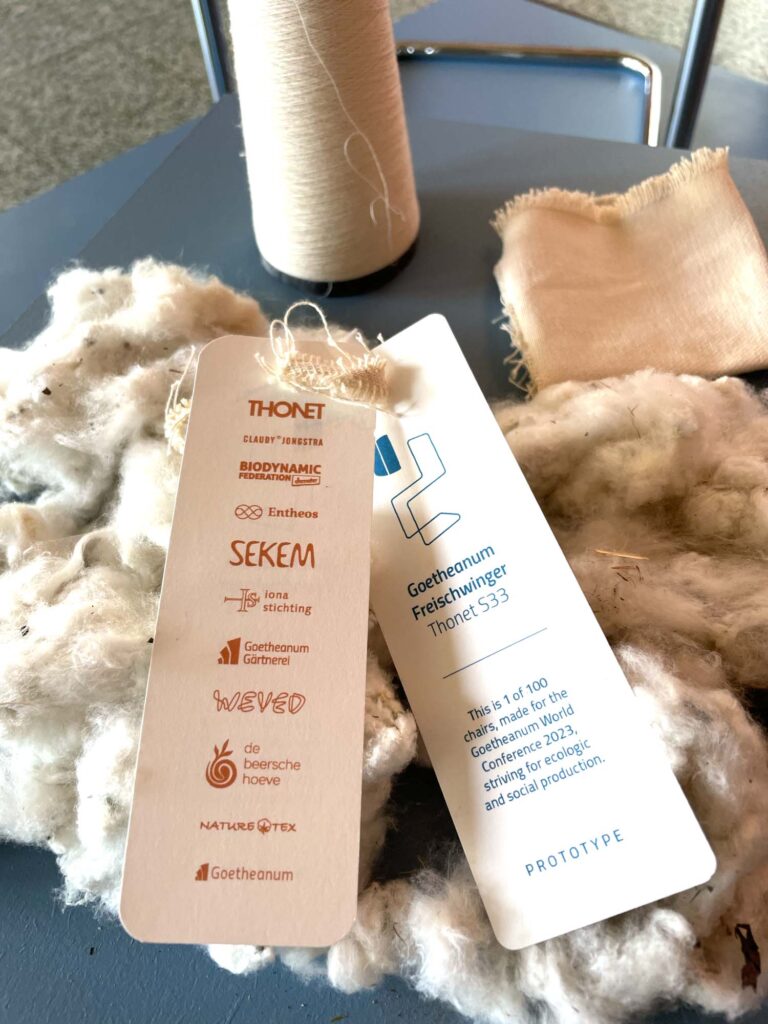
For the tapestry, you use unspun wool—why?
Yes. I used the raw wool for the tapestry, which was out of the question for the chair. For the upholstery, we enlisted spinning mills in Ireland and Spain. All these local industries still exist. These are already very vibrant, but I think the chair will be inspiring for them. The shades of the upholstery will be very colourful. In a week, I will travel with my sons to Spain, where a wonderful collaboration with a biodynamic farmer is developing. He not only works organically but biodynamically because we believe that this is the future. This farmer produces a large quantity of plants for us to dye the wool. Last month, they tilled them by hand, which is an intensive process. The cultivation of these plants also promotes biodiversity.
At the same time, this biodynamic farm is much more than a farm. It is a place where designers, scientists, philosophers, and social entrepreneurs come. We also plan to work with the Iona Stichting Foundation from the Netherlands to set up a dyeworks locally so we can later dye the wool in Spain. My sons are going to Spain, picking the flowers, and bringing them to the Netherlands in a van. reduce transport, dyeing is planned in Spain itself in the future. That is why we are now training an assistant in the Netherlands, and in a year, she will go to Spain to produce these ecological vegetable dyes professionally. By the way, our chair is the prototype for the new Demeter certification of textiles and plant dyes!
Is it about managing the whole production line ecologically?
Yes! Completely and utterly! And we aim to also operate in a socially responsible way. It is a community project. Many people from the region work at the farm in Spain. They go there every morning and talk about what I think are very uncommon things for them. There are probably only ten people in the world who are professionally involved in vegetable dyeing. That’s not a lot. That is why we must pass on this beautiful legacy.
You talk a lot about environmentalism, yet you are also an artist. How are art and the environment connected for you?
There is a great opportunity for artists to express themselves politically alongside their artistic work and to channel politics into their art. Many artists participate in community projects, working with others and creating a social sphere. These are the first steps of a good movement. This is especially true for Spain because Spain is a country that has been shaped by wool culture for centuries. You see many projects in the mountains, in Galicia and Catalonia, forming collaboratively from the bottom up. People are gaining autonomy and establishing small communities.
You are now working with the Section for Agriculture and the Goetheanum World Congress. What is your relationship with anthroposophy?
When my children started attending Waldorf school in the Netherlands, a new perspective revealed itself to me. That inspired me a lot. In 2019, we showed my wool work, WovenSkin, for the first time at the Goetheanum. That was the first step. The Guernica tapestry is a second. It alludes to monoculture and shows the urgency of ecology.
Yet, hope is always a theme?
Yes, we started a school in the Netherlands, where we live, not because we thought: okay, one morning we will wake up and start a school, but because things develop naturally in the way we work, the way the studio works. Over the past seven years, many students have come to practise—literally from the material to the form, creating fashion and products. We thought, okay, let’s make a place for education, and then we hear that many young people are very hopeful, many people who do internships with us, who come for three or six months, start their own little community through work. We have many of these satellites—hopeful seeds that are being planted in the world.
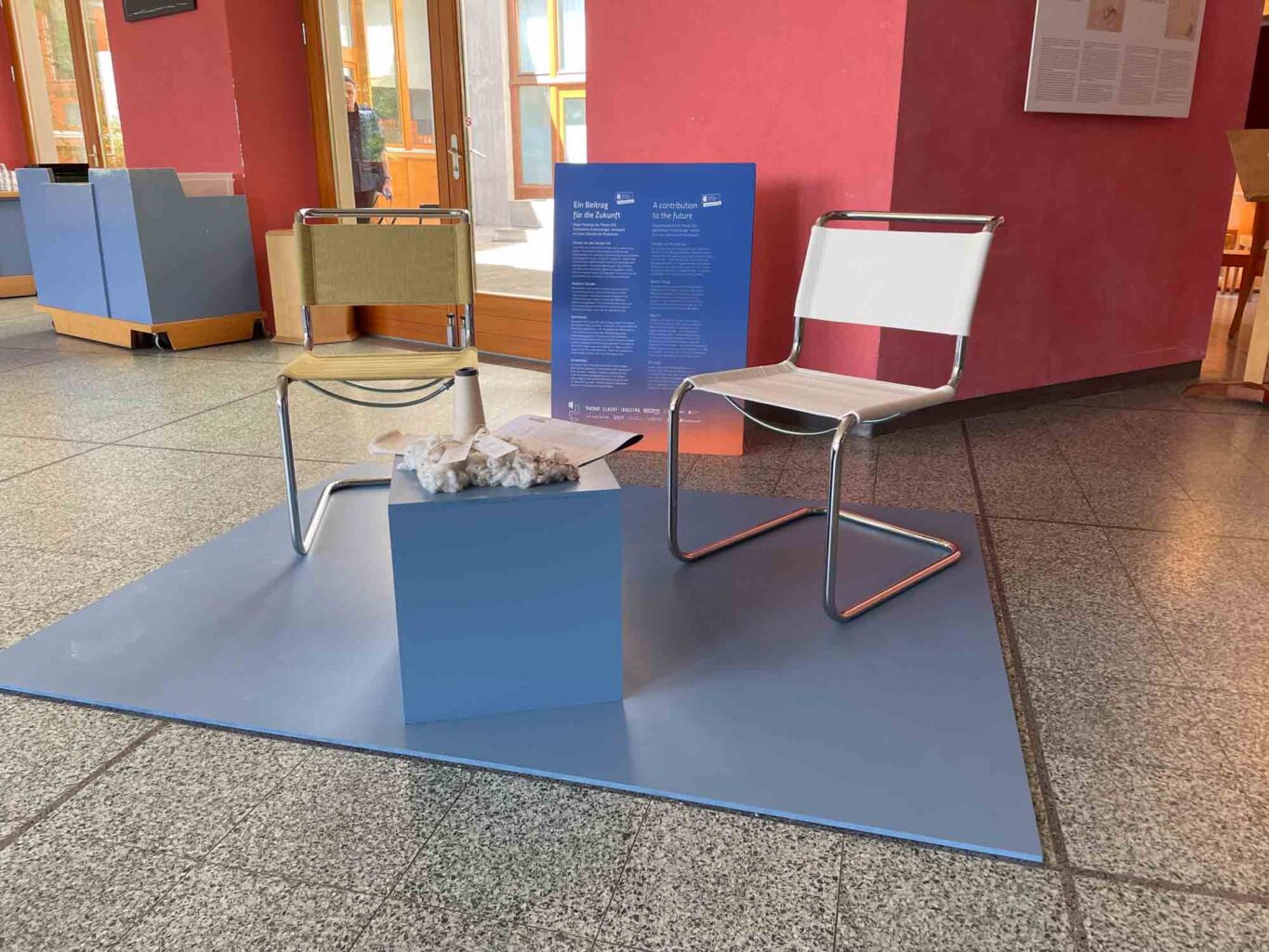
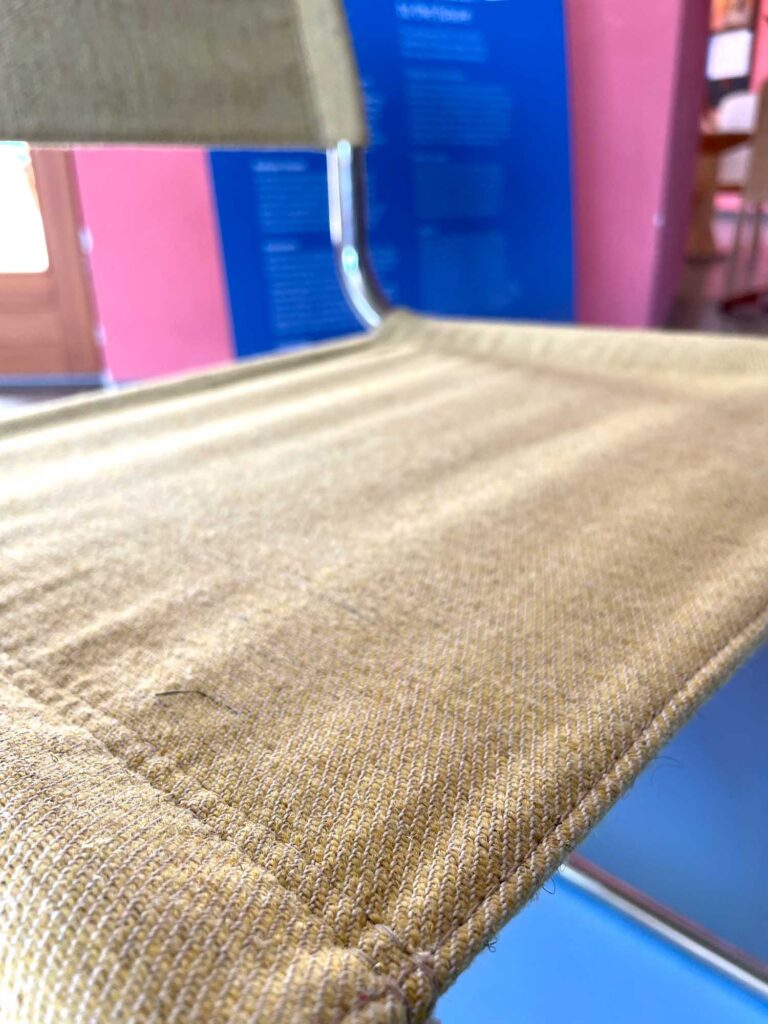
How does your work relate to Picasso and his work Guernica? The coronavirus crisis, the war in Ukraine, the climate crisis—how do these crises affect your work?
I started my tapestry on peace and ecology before the war. But then it began! That was unbelievable to me. Interestingly, Picasso’s Guernica also travelled and had a political dimension because it was once unveiled when Colin Powell was justifying the invasion of Iraq. I think my piece was my Guernica and became so topical because of the war.
I also think that the peasant protests in the Netherlands were, in some ways, like an agricultural war. There has been a lot of resistance, even aggression, to the government in the Netherlands. Many farmers would like to transition, but they don’t know how. We want to show ways. This includes having our clothing collection from October—holistically plant-based, made in Europe. The cotton comes from Sekem, but the wool is from Spain and the Netherlands. Fashion is a very communicative tool, so it’s important to show here that it can also be done ecologically.
Your work radiates enormous will and energy. Where do you get it from?
It’s not hard; it comes from inspiration—from talking to all these people, just like now. We meet and encounter partners and comrades-in-arms. They also have a lot of potential and the ability and energy to bring about transformation. Such people are choosy about who they work with. After all, it’s about pulling together. The people I work with are very motivated. I think that’s part of the chemistry.
Johannes Kronenberg We invited Claudy to participate in the World Conference and bring her artwork Guernica so it can be on the big stage. How do you perceive the anthroposophical world movement? There is such diversity, all these farms and the schools. Some people are more in the centre, and others are more on the periphery. Some come, others disengage. It’s like a beehive—or what do you think?
Claudy Jongstra I think the chair is a really good example of this moment when all these transformative forces intertwine—big and small. It also gives people a sense of human scale that everyone is invited to participate. This world movement is very welcoming. It is so appealing because it unfolds joy. So I think it’s a compelling invitation to join. I am happy to contribute to this—I feel invited, and somehow, it is I myself who issues the invitation.
Info The Thonet S33 series comprises 100 chairs. Pre-orders: freischwinger@goetheanum.ch.
Sales begin at the World Conference.
Translation Christian von Arnim
All Photos Johannes Kronenberg

